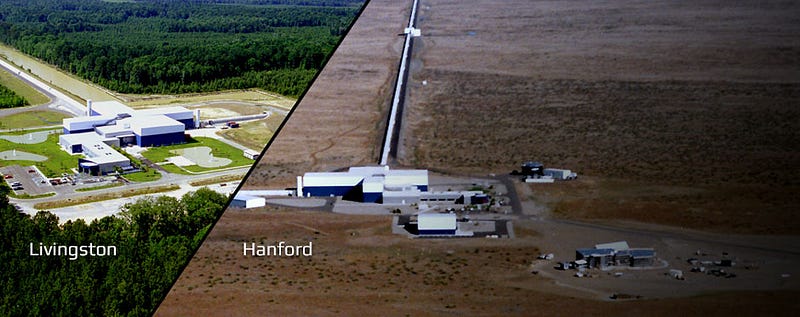 What
you see above are the instruments that created history on 14 September
2015. In a Galaxy far far away, Billion years ago 2 Black-Holes were
locked into a dance till they united as one and all we hear are ripples
it created in Space-time.
What
you see above are the instruments that created history on 14 September
2015. In a Galaxy far far away, Billion years ago 2 Black-Holes were
locked into a dance till they united as one and all we hear are ripples
it created in Space-time.
To
hear these ripples all that was needed were the most sensitive and
precise instrument on Earth that was conceptualized nearly 5 decade ago
by Rainer Weiss and Kip Thorne. After constant perseverance they finally
got approval for funding in 1994 by the NSF (National Science
Foundation),Construction neared completion in 1997 and the detectors
went online in 2002. From 2002–10 the detectors failed to register any
Gravitational waves! The detectors were then upgraded from 2010–15 and
new and more sensitive detectors called the Advanced-LIGO came into
existence that detected the first Gravitational wave GW150814. What
looked like an instant shot to fame was actually years of perseverance
and confidence of both Scientists and Government in the project.
Interferometery and the Laser Interferometer Gravitational Wave observatory
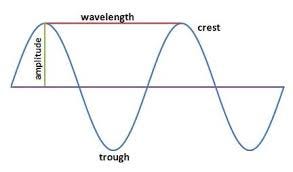
Interference
is the phenomenon observed when two waves interact with each other.
When the waves interact if they are in their crest phase the resultant
wave have has a crest that is summation of the crests of interacting
waves and similarly if the troughs interact with crest the wave is
nullified. Look at the graphic below.
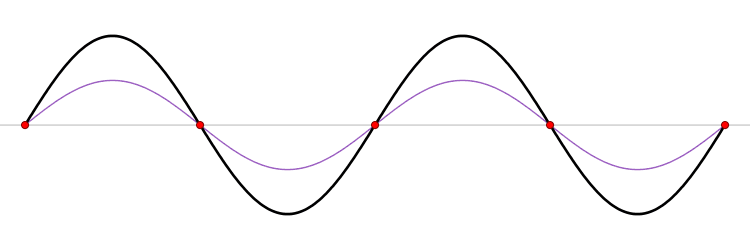 When two waves are of same kind (have similar frequency,phase and
amplitude) travel the same distance through same medium they have the
same state (phase). I.e. if 2 similar waves travel a distance of 4 Km,
then after 4 Km if one of the waves is in trough state so is the
other.We exploit this property of wave along with interference in an
interferometer.
When two waves are of same kind (have similar frequency,phase and
amplitude) travel the same distance through same medium they have the
same state (phase). I.e. if 2 similar waves travel a distance of 4 Km,
then after 4 Km if one of the waves is in trough state so is the
other.We exploit this property of wave along with interference in an
interferometer.
Interference Patterns
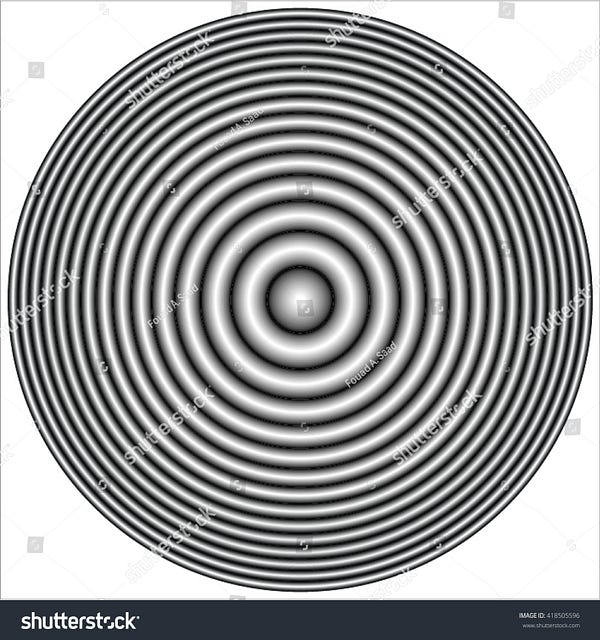
When two beams of light waves interact they seldom create a pattern due the phenomenon of interfernce.
Look
at the image above it is a pattern created by interference called
Newton’s Ring it is similar to the pattern obtained in an interferometer
where dark bands are the region where destructive(trough + crest)
interference takes place and the Light bands(trough + trough or crest+
crest) are the region where constructive interference takes place. This
pattern remains stable if the interferring waves travel a constant
distance in the same medium.
The Interferometer
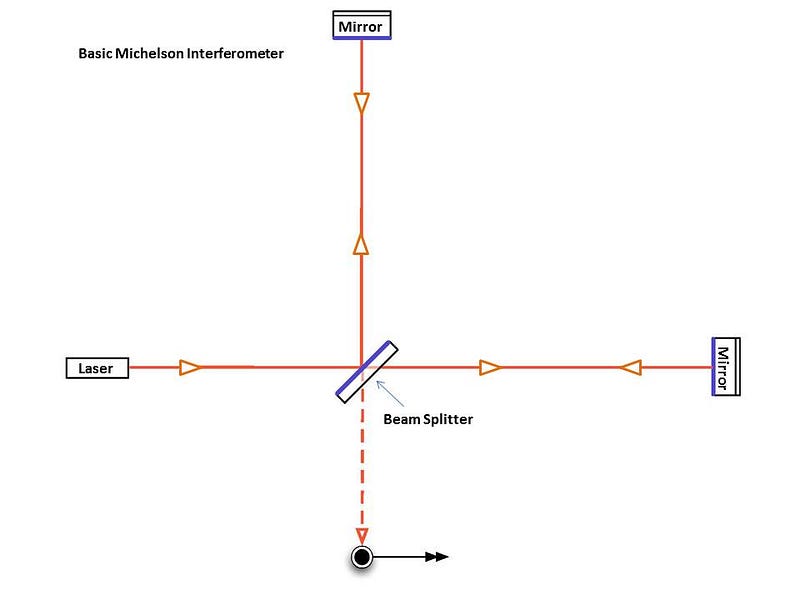
LIGO is esentially an interferometer so understanding the setup of an interferometer can suffice to give you how the LIGO works.
The
Laser is our source of light waves that is directed towards the
Beam-Splitter. Beam-splitter(a half-silvered mirrior) divides the beam
of Laser into two similar beams. These beams travel equal lengths
towards the mirriors in an L-shaped configuration where they are
reflected and again reach the center to create an interference pattern
similar to the diagram above. This pattern is stable till the length of
both the arms are same. People at LIGO study this pattern to determine
wether a Gravitational Wave has passed.
How Gravitational waves affect LIGO

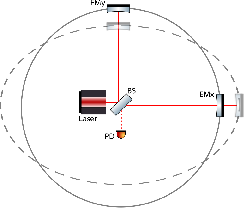 When
Gravitational waves passes through any mass it makes it contract in one
direction and expand in other. This is due to the Changing intensity of
Gravitational field near the object. Even our LIGO detectors are not
spared from this phenomenon.
When
Gravitational waves passes through any mass it makes it contract in one
direction and expand in other. This is due to the Changing intensity of
Gravitational field near the object. Even our LIGO detectors are not
spared from this phenomenon.
Thus
when a Gravitational wave passes from an interferometer one of the arms
of the interferometer are elongated and the other is contracted. This
also changes the distance the light has to travel in both the arms. Now
that the light waves are travelling different amount of distances due to
Gravitational Waves there is a change in the interference pattern at
the center of the LIGO detector. Voila! this is what indicates that a
Gravitational Waves has passed and by studying the distortion it created
scinentists are able to estimate the source, eneregy associated and
other parameters associated with the Wave.
It is wonderful to think that a phenomnon involving one kind of wave was used to detect another.One might also think that an earthquake can also cause the arms to change their orientation mimicking a Gravitatonal Wave. Well they are not wrong but their concerns are adeqately addressed.
Watch out for the next article on :-
How sure are we that we have detected a Gravitational Wave? How sensitive is LIGO?
Comments
Post a Comment